Layered Parotta
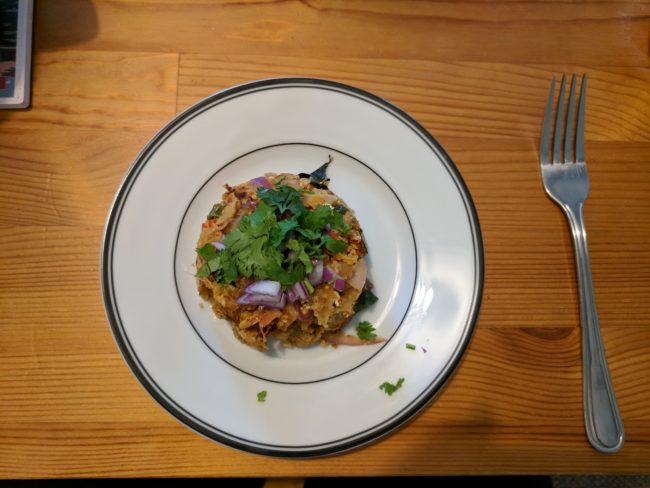
When I think of one city that I want to settle in, I think of my Madras. I know a lot of my present companions/roommates/friends won’t agree with me and in fact, I know that they would take the time to argue with me about this, but in my eyes, Madras, my home, is a beautiful city. Perhaps it’s because they don’t know it as well as I do. Yes, the weather is always hot & sultry and everyone speaks Tamil (like duh, you are in Tamil Nadu,) but to a native, that’s what makes the city lovable. We are proud of our language and the heat drives us to our beaches in the evening.
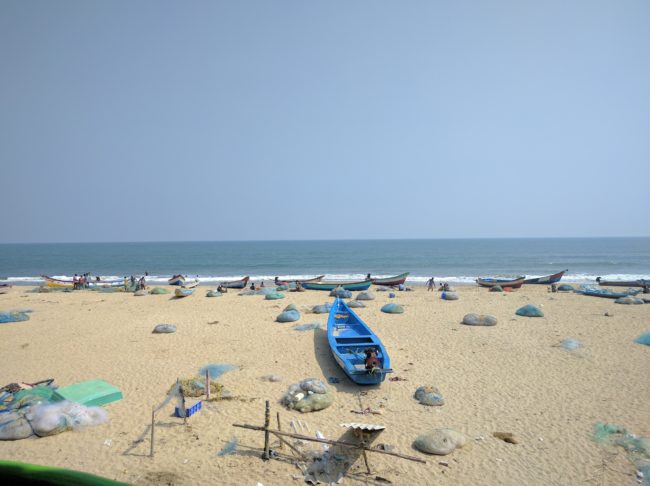
Perhaps they don’t see the little gems tucked away, the ones that you have to love the city to see. Like the sight of twinkling lights in the Madras Port from Muthuswamy bridge (which incidentally, has the Madras 0 milemarker), the lighthouse which stands tall at Marina beach, guiding sailors in the deep, dark night, the juice shop at the corner of CP Ramaswamy Road and Dr. Ranga road where they’d give refills on your delicious mango juice for no charge at all, Seena Bai tiffin centre in old Madras, where they whip up the best dosas sprinkled with spicy gun powder, chopped onions and chilis or the onion pakoda shop at Mylapore tank which opens up for only for couple of hours in a day and sells out within minutes.

God, I miss Madras.
If someone were to ask what is the one food I’d ask for if someone was coming from home, it would be parotta salna and the best place to get it from is not fancy restaurants, but from small roadside carts and hotels. I don’t know what it is about the taste from such places, but damn do they know their food. In T. Nagar where I lived, there is this hole in the wall (and I don’t say that to be descriptive, I’m pretty sure it’s an actual hole in the wall,) where they serve the best parotta salna for less than a dollar. While waiting for my order, I normally like waiting outside as I get really creepy looks from the patrons inside, but truly, outside is where the magic happens. In front of a stand with an attached gas stove, a man stands in his inner vest, and his dothi folded and tucked so as to not encumber him. In his hand is a spatula and a bowl of oil. This is where he makes the parottas. Thin, flaky layers that pull apart easily and can be eaten with no accompaniments, because they are that tasty! And he makes them with such flair. Just like a pizza, but way thinner, it flies in the air, expanding in circumference as it falls back to his hands and not a single tear. No matter how many times I see this, I’m always mesmerized.

Last week, when I ran out of chapati flour, I decided to try my hand at the art of making parottas. These coin sized, flaky, layered flat breads are easy to make, but I have to warn, a bit time consuming. There are various stages of working with the dough and various stages of resting. Let’s start with the first.
Stage 1: Mixing the dough. Bring all the ingredients together and knead the dough for about 5 minutes. When you fold it, it has to be smooth and not crack.
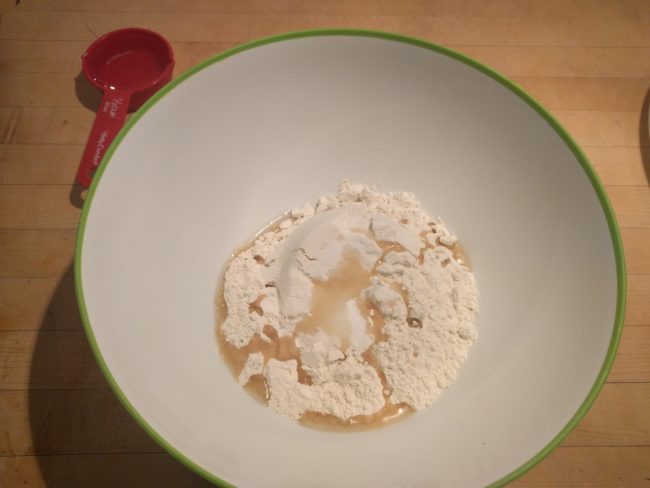
Stage 2: Resting: Cover this with a wet cloth and let it rest for about 2 hours. This relaxes the gluten.
Stage 3: Divide the dough into equal parts and let it rest for about 5 minutes. This part is important as it helps the dough spread without cracking while rolling it.
Stage 4: Roll the dough to about the size of your hand. It will shrink a touch when you rest it. Lay the rolled dough on a plate and slather it with oil. Notice how I say slather, because it is absolutely necessary. This dish needs oil, it helps loosen the dough. Let this rest for 20 mins.
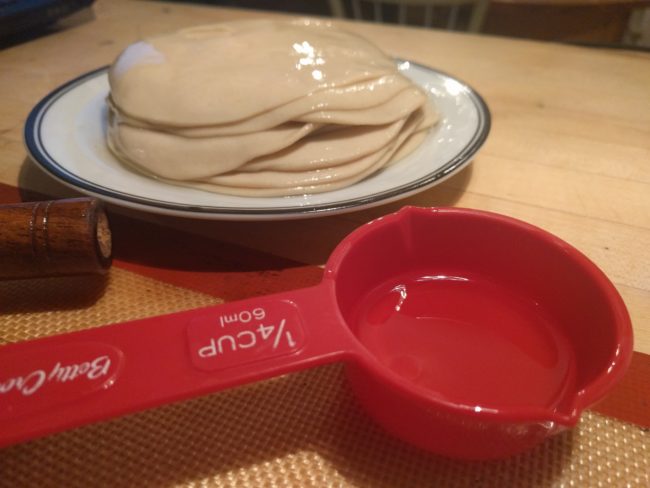
Stage 5: Place the disc on a flat oiled surface and spread the disc until it gets really thin. You’ll see some air bubbles, don’t panic. The more the better, actually! That’s what brings out the layers. You can use some oil to help spread it better.
Stage 6: Hold the dough by the edge on one side and lift it up. The sides would automatically fall to the middle and give you a long rope. Hold the bottom with one hand and roll it into a spiral. Allow them to rest for 5 minutes.
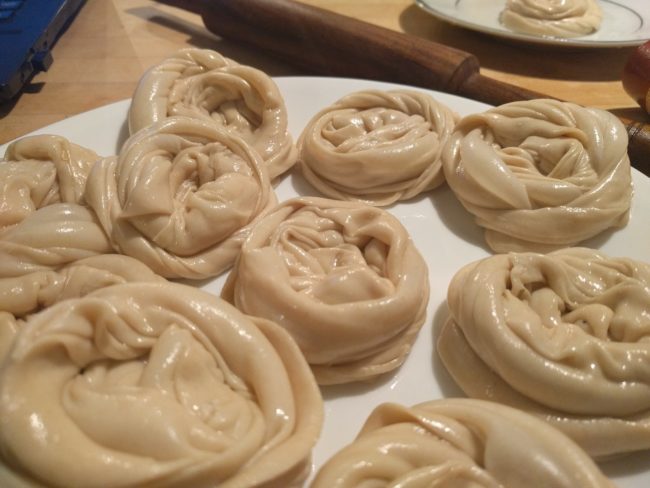
Stage 7: Pat down the spirals into a flat circle and heat it over a hot tawa for 3-4 minutes, until a bit golden.
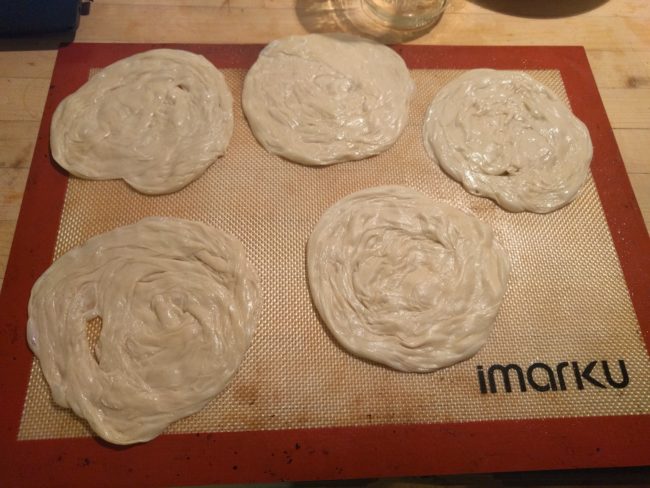
Your parottas are now ready. You could enjoy them with some spicy chicken curry or vegetable kurma. Me? I basically cut the parotta up into small pieces and mixed with some cooked onions, tomatoes, chilis, and scrambled egg to make kuthu parotta, another Madras classic.
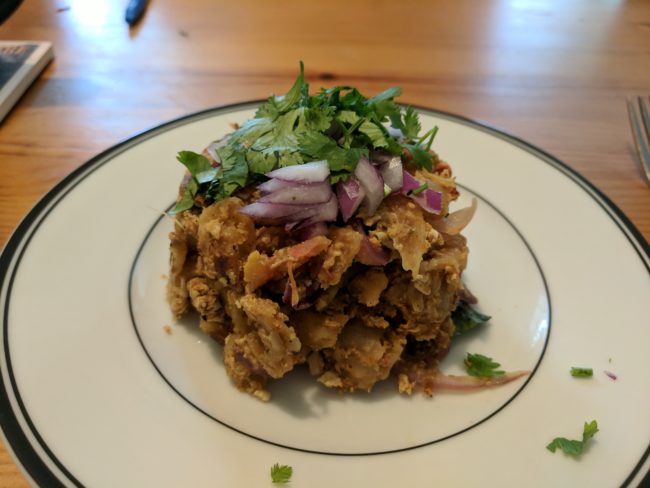
This is an ode to my beautiful city, Madras.
How do you want to eat your parotta?
Light, flaky, layered parottas that perfectly accompanies any spicy curry.
Mix in the all-purpose flour, salt, sugar, oil, and water. Bring it all together and knead the dough for about 5 minutes, until it stops cracking when you fold it. Cover the dough with a cloth and let it rest for 2 hours.
After 2 hours, divide the dough into small balls and let it rest again for another 5 minutes.
Flatten the dough and roll them into small circles, about the size of your hand. Place each parotta on a plate and slather it with oil. Stack them on top of each other and keep applying oil on top of each parotta.
Let the parottas rest on the plate for another 20 minutes. Now comes the fun part. Lay a disc on a flat, oiled surface. Spread the parotta by gently pulling at the sides until it becomes thin and translucent. Because it has been resting in oil, you should be able to spread it easily. It will have some air bubbles, this is good. Don't pop them!
Hold the thin dough by the edge on one side and lift it up. The sides would automatically fall to the middle and give you a long rope. Hold the bottom of the rope with one hand and roll it into a spiral. Allow the spirals to rest for 5 minutes.
After 5 minutes, flatten the spiral by gently patting it down. It should once again come back to the size of your hand.
Heat the parotta on a tawa, on low heat. The low heat is important as it allows the insides to cook as well. Flip it a couple of times and take it off heat once it is beautiful and golden.
This last step is what shows of this flaky parotta. Stack the parotta on a plate and fluff them between your hands (like clapping with them in the middle.)
Serve with a spicy curry or chop them up to make a kuthu parotta.
Ingredients
Directions
Mix in the all-purpose flour, salt, sugar, oil, and water. Bring it all together and knead the dough for about 5 minutes, until it stops cracking when you fold it. Cover the dough with a cloth and let it rest for 2 hours.
After 2 hours, divide the dough into small balls and let it rest again for another 5 minutes.
Flatten the dough and roll them into small circles, about the size of your hand. Place each parotta on a plate and slather it with oil. Stack them on top of each other and keep applying oil on top of each parotta.
Let the parottas rest on the plate for another 20 minutes. Now comes the fun part. Lay a disc on a flat, oiled surface. Spread the parotta by gently pulling at the sides until it becomes thin and translucent. Because it has been resting in oil, you should be able to spread it easily. It will have some air bubbles, this is good. Don't pop them!
Hold the thin dough by the edge on one side and lift it up. The sides would automatically fall to the middle and give you a long rope. Hold the bottom of the rope with one hand and roll it into a spiral. Allow the spirals to rest for 5 minutes.
After 5 minutes, flatten the spiral by gently patting it down. It should once again come back to the size of your hand.
Heat the parotta on a tawa, on low heat. The low heat is important as it allows the insides to cook as well. Flip it a couple of times and take it off heat once it is beautiful and golden.
This last step is what shows of this flaky parotta. Stack the parotta on a plate and fluff them between your hands (like clapping with them in the middle.)
Serve with a spicy curry or chop them up to make a kuthu parotta.